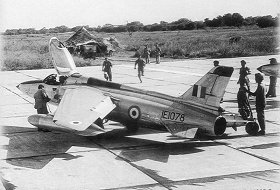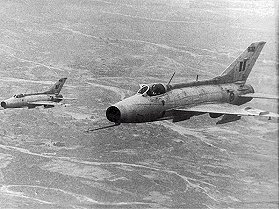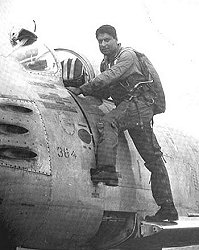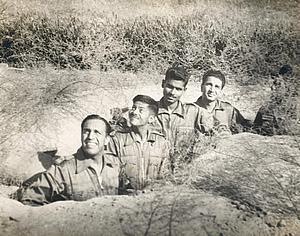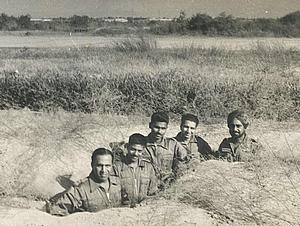In war, much often hangs on a knife-edge. As this piece by Air Marshal Raghavendran shows, this was especially true of the famous PAF raid on Pathankot. It may have been down to the cautiousness of one man in a key position, that this single most successful raid ever mounted by the PAF against India did not run into a CAP flown by the top guns of the lead Gnat squadron of the time .
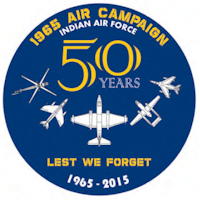 In war, much often hangs on a knife-edge. As this piece by Air Marshal Raghavendran shows, this was especially true of the famous PAF raid on Pathankot. It may have been down to the cautiousness of one man in a key position, that this single most successful raid ever mounted by the PAF against India did not run into a CAP flown by the top guns of the lead Gnat squadron of the time ….
In war, much often hangs on a knife-edge. As this piece by Air Marshal Raghavendran shows, this was especially true of the famous PAF raid on Pathankot. It may have been down to the cautiousness of one man in a key position, that this single most successful raid ever mounted by the PAF against India did not run into a CAP flown by the top guns of the lead Gnat squadron of the time ….
The day was 6th September 1965, the day the Indian Air Force was first used across the Indo-Pak border in the 1965 conflict. By that time the Pakistani Air Force had already shot down four of our Vampires, and my squadron had claimed two Sabres, but these had all been over Indian territory.No 23 Squadron, under my command, had assembled in dribs and drabs at Pathankot (That is another story, which I will recount one day). I had joined the detachment only a couple of days before. We were full of confidence, as the redoubtable lead Gnat squadron. Our task at that time was primarily to do ORP (Operational Readiness Platform) duties, due to the mounting escalation of the Indo-Pak air war. This meant that our aircraft and pilots were at the end of the runway, ready to take off as soon as the Air Defence System detected any enemy aircraft approaching, and intercept them.We had some sharp capabilities in this area. We could start up within 75 seconds of receiving the order to scramble, even if the pilots were at rest in the bunker, and be airborne to meet any threat within a minute and a half. This was a timing that couldn’t be matched by any other interceptor fleet in the world. Most others could do it in at best two minutes, and that only if their pilots were in ‘cockpit readiness’.
The first set of ORP aircrew (four of us including me) arrived in the underground bunker long before dawn. Soon afterwards we heard the Mystere aircraft on the base taking off. We rushed out and saw them taking off with full war loads on. We were jumping with joy because, after having been at the receiving end for a couple of days, we felt that we were at last hitting back at the enemy. We had not known in advance about the attack missions, as part of the ‘Need-to-Know’ policy on the basis of which information on such missions was made available.As soon as I was relieved from standby duty, I rushed across to the offices of the Mystere squadron commanders to find out which enemy airfields they had struck. Surprise and shock – no airfields had been attacked – they had gone after targets of opportunity!! I just couldn’t believe it.I have always wondered what the logic was. I don’t have any authentic answers, since I was too low on the totem pole, as a mere squadron commander, to be privy to the ‘Big Picture’ of the Operational Strike Plans. But one theory doing the rounds among us was that it was the policy of our Government that we would not strike their bases unless our own bases were attacked. Another theory advanced (Always officially denied – Ed) was that the ‘Powers that Be’ felt that since senior officers in the air forces on the two sides had been comrades together before Partition, they felt that if they were chivalrous and comradely enough not to attack the air force in their own bases on the other side, then they wouldn’t be attacked in turn!!
But we were thinking at squadron commander level, and I was sure as fate that notwithstanding those old connections, we would be attacked at dusk. Even though everybody knows that dusk or dawn is when attacks come, those are still the preferred times when attacks are carried out, mainly because the chances of successful pursuit are less.I also knew of Nur Khan, the Pakistani air chief, by reputation. He was an alumnus of my own school, the RIMC in Dehra Dun. He had been a ‘killer’ boxer and devout Muslim while at school. He had a plethora of professional role models from among older alumni of RIMC to base his conduct on, including Prem Bhagat, the first Indian Victoria Cross awardee in World War II. His predecessor as the air chief in Pakistan was Asghar Khan, also from the RIMC, who was another thorough professional. Between them, and with immense help from the USA, they had built up a tradition of professionalism and one couldn’t possibly expect them to let the Indian Air Force get away with it.
So I went to the Station Commander, Group Captain Roshan Suri, and asked him for permission to take up a four aircraft Combat Air Patrol over the airfield at 5:30 PM. He said he would think about it. I kept going to him, phoning him or intercepting him when he visited the squadrons during the day. At first he said he would let me know. Then he said that the ORP aircraft were not to be touched and so I must get eight aircraft on the line before he could authorize it. I had only about ten aircraft altogether, available in Pathankot at that time, but managed to get eight serviceable and went back to him in the afternoon. He said he would let me know.I had in mind that the other three would be Johnny Greene, Trevor Keelor and “Ajax” (aka “Kala”) Sandhu, all of whom had a very high rating as determined and capable combat pilots. I was pretty sure of myself too. And we were all supremely confident of the maneuverability of the Gnat aircraft and the punch of its two 30mm cannons.When I went to the Station Commander around 4 PM, he floored me with a different plan. At this time the first MiG-21 squadron was just becoming operational, and two of their aircraft, with their Commanding Officer, Wing Commander MSD “Mally” Wollen, and his flight commander “Laddu” Sen had been allocated to Pathankot for operational duties. The plan was that they would get airborne around 6 PM, climb to 40,000 feet altitude and do supersonic runs in the vicinity. Obviously these tracks would be picked up by Pakistani radar. This was expected to put the fear of God into the Pak commanders, who would then not attack our airfield.Those were the days when the MiG-21 was very new, and we had not learned to exploit it as we did later. It was strictly a high level interceptor and the pilots flew with the kind of gear meant for high altitude, including a helmet that resembled an astronaut’s. It carried only two K-13 missiles and no guns.The Mystere and Gnat squadron commanders, their flight commanders, and senior pilots were ordered to attend the briefing of the MiG formation, which we all did.
After an impressive briefing the pilots picked up their space helmets, tucked them under their arms and walked out towards their aircraft, which had been pushed out of their blast pens for start-up and take-off. I am not sure of the exact time but I have a vague memory that it was just about 5:30 PM. THAT IS WHEN THE PAF STRUCK!!There was pandemonium. Bullets were flying all around. We all rushed to the nearest trench and dived in, not sitting and crouching as we should have been but piling ourselves flat on top of each other!! We could hear and see the Pakistani Sabres going round and round, as though in range practice, and picking off all the possible aircraft, including the two MiG-21s, in spite of the anti-aircraft guns blazing away. The rest is history. We were told that four Sabres had attacked, but since they were going round and round we couldn’t count them accurately whenever we put our head up in the trench.
There went our opportunity to score a historic success. And perhaps to secure more decorations than the squadron eventually received. Fortunately, Keelor had already been awarded his VrC, and Ajax Sandhu got his with a kill later during the war. I recommended Johnny Greene (who was on attachment to my squadron) for a VrC at the end of the war, for sustained leadership as a flight commander in my squadron during the war. Though I was told that the VrC is given only for individual acts of bravery, I had my way and it was awarded.
I have no doubt that none of the Pakistani aircraft would have gone back had the four Gnats been airborne. I am not saying this out of bravado. That same evening the PAF had launched attacks on two other Indian airfields, Adampur and Halwara, besides Pathankot. The PAF formation bound for Adampur had not even reached their target, but abandoned their strike after a brief encounter with a formation of IAF Hunters on the way. At Halwara, four IAF Hunters had been on combat air patrol when the Pakistanis arrived, and all but one of the attacking Sabres were shot down, one even by a young Flying Officer, VK Neb, who was still U/T Ops. We would have done just as well, I am sure, with our high calibre team. Unfortunately, the anti-aircraft guns didn’t get any of them either and so the PAF got away with it.Fortunately for us, the Pakistani attackers committed the same mistake that the Japanese did at Pearl Harbour. They attacked and certainly caused loss of aircraft, but the infrastructure such as refuelling capabilities and armament stores were left intact. So were the runway and the taxi tracks. So, we were operationally ready immediately afterwards – and were on Combat Air Patrol from the next morning, throughout the day!!
How I wished, every time that I was airborne for the endless Combat Air Patrols of the rest of the war, that the Station Commander had listened to my pleas. Memory is fading, but I think the only aircraft that my squadron lost in the attack was lost to flames jumping from the fuel bowser in the next pen, the only one hit, while refuelling a Mystere. It was replaced from our Base Repair Depot in a matter of days.The Pakistani Air Force never attacked our airfields again, most likely because of their experience of losing nearly all the aircraft that attacked Halwara. A somewhat small Air Force like the Pakistani one just cannot afford that rate of attrition.
Some asides:
The only aircraft from Pathankot airborne at the time of the PAF strike was a Mystere being flown by a young Flying Officer Mike McMahon, who had just been posted to No 31 Squadron and had been sent up for a training sortie. He was near the airfield, waiting to join circuit to land. He was instructed on the R/T to stay away from the airfield till the attack was over and then come back. I presume that the ATC officer was lying on the floor when he passed this message, as he was under attack!! McMahon survived, as the Pakistanis never noticed the ‘Lone Ranger’, and carried on to become an Air Marshal and Vice Chief of Air Staff, over 35 years later.
We were piled six or seven deep in the trench. The man at the bottom of the pile screamed “I am getting suffocated, I am getting suffocated!!” The man at the top of the pile, whose butt was sticking out above the lip of the trench, replied, “Would you like to change places??”
Webmasters Note: Since publication of this article on the internet on 9th June 2005, this article was the cause for a commotion across the border. Air Marshal Nur Khan’s response was published in Dawn Newspaper’s 02 Aug 2005 issue, followed by another response from Air Commodore Sajjad Nosey Haider on 04 Aug 2005.
Copyright © Air Marshal S Raghavendran . All rights reserved. Reproduction in whole or in part in any form or medium without express written permission of Air Marshal S Raghavendran is prohibited.
